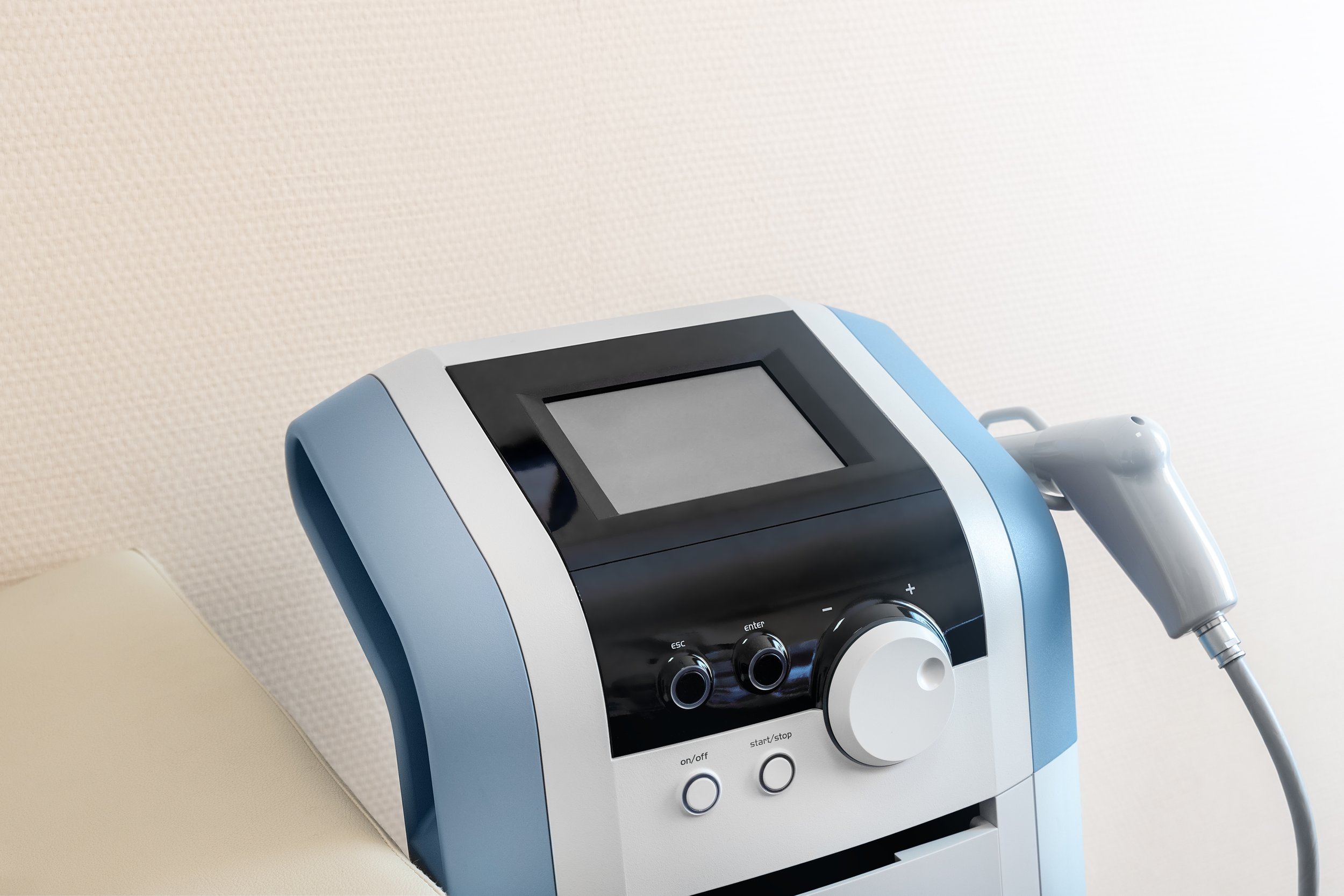
S H O C K W A V E
A N D
L A S E R T H E R A P Y
We work with many runners at Atomic. See below how we can help take your running to the next level
Shockwave Therapy
Introduction
Extracorporeal shockwave therapy, more commonly known as shockwave therapy, is a non-invasive treatment that involves sending high-energy sound waves to targeted areas of the body. This therapy is often used to alleviate pain and promote healing in conditions like tendinopathy, plantar fasciitis, sports-related injuries, scar tissue adhesions, and muscle strains. By stimulating blood flow, tissue repair, and collagen production, it can help reduce pain and improve mobility, making it a valuable tool for rehabilitation without the need for surgery or medications.
Pain Relief Shockwave therapy effectively alleviates pain from conditions like tendinopathy, plantar fasciitis, and muscle injuries
Faster Healing It stimulates blood circulation and accelerates the body's natural healing processes, reducing recovery time for injuries and chronic conditions in as little as 3 visits
Non-Invasive Unlike surgery, shockwave therapy is non-invasive, meaning no incisions or anesthesia are required, minimizing the risks and recovery period
No Medication Dependency By addressing the root cause of pain and promoting healing, it reduces the need for long-term medication use, sparing you from potential side effects
Improved Mobility Patients often experience improved range of motion and mobility, making it an excellent choice for athletes and individuals looking to regain their active lifestyle
Minimal Downtime Shockwave therapy sessions are relatively short, and most patients can resume their daily activities immediately after treatment
Versatile It can be used for various musculoskeletal issues, including scar tissue adhesions, making it a versatile option for a wide range of patients
Cost Effective By avoiding surgeries, medication use, and doctors visits, shockwave therapy is overall a very affordable service with great results! Our rates are typically much cheaper than physicians and other medical providers
Benefits
Laser Therapy
Introduction
A class IV laser is a high-powered therapeutic laser device used to treat various musculoskeletal conditions and injuries. It emits concentrated laser energy that penetrates deep into tissues, promoting healing, reducing pain, and improving mobility. Physical therapists use Class IV lasers as a non-invasive and effective tool to enhance their patients' rehabilitation and recovery.
Pain Relief Class IV lasers effectively reduce pain by decreasing inflammation and promoting the release of natural pain-relieving chemicals in the body
Faster Healing The therapy accelerates tissue repair and healing, which is especially beneficial for sports injuries, post-surgery recovery, and chronic conditions. Common conditions treated with a class IV laser include: bursitis, fractures, arthritis, muscle strains, chronic pain syndromes, carpal tunnel syndrome and other nerve related disorders, and wound healing
Improved Mobility It helps increase range of motion and flexibility, making it easier for patients to regain their mobility and functionality
Non-Invasive Class IV laser therapy is non-invasive, meaning it doesn't require incisions, injections, or medications, reducing the risk of complications and side effects
Reduced Need for Medications Patients may rely less on pain medications, reducing the potential for dependency and side effects
Customized Treatment Physical therapists can tailor laser therapy to address specific conditions and target problem areas effectively
Quick and Comfortable Sessions are relatively short, and most patients find them comfortable, with minimal discomfort or downtime
Versatility Laser therapy can be used to treat a wide range of musculoskeletal issues, making it suitable for various patient needs
Long-Term Relief and Minimal Downtime Many patients experience long-lasting pain relief and improved function, reducing the likelihood of recurring issues. Patients are also able to continue with their activities with minimal modifications
Enhanced Quality of Life By reducing pain and improving mobility, patients can enjoy a better overall quality of life, participating in activities they love without limitations




